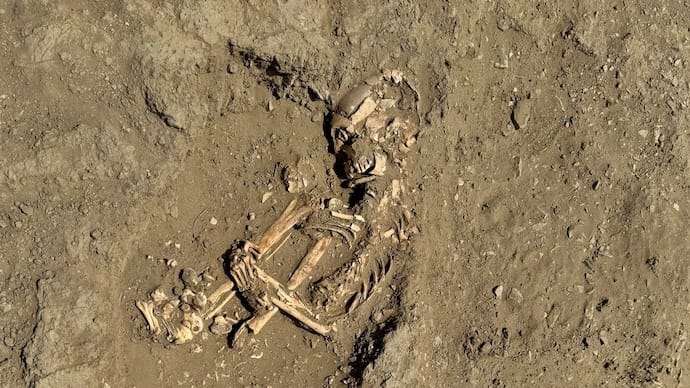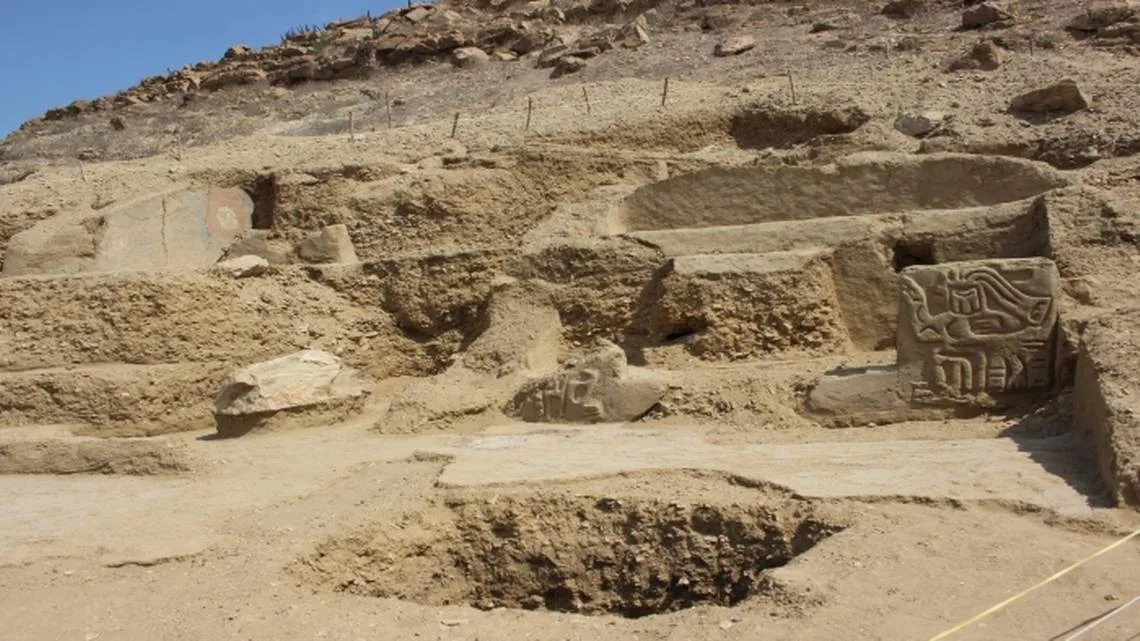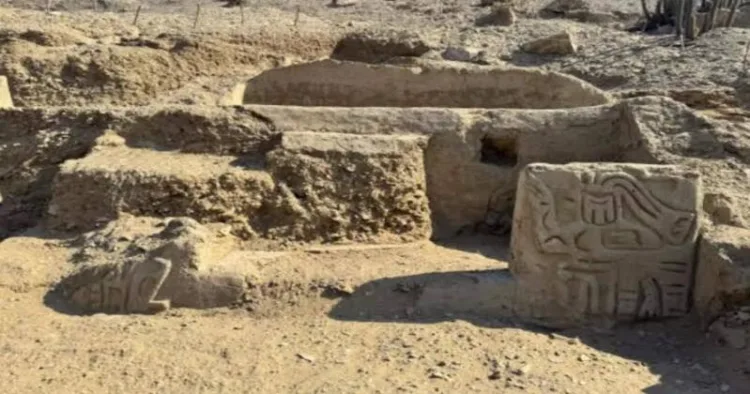Under a sand dune in northern Peru, a group of archaeologists have found what looks to be the remains of a ceremonial temple dating back 4,000 years, coupled with skeletal human remains that may have served as sacrifices for religious rituals. The remains were found in the Lambayeque region of South America, in the sandy desert district of Zana. This location is a short distance from the Pacific Ocean and around 780 km (484 miles) north of Lima, the country’s capital.

Luis Muro, an archaeologist from Peru’s Pontifical Catholic University who led the research said, “We are still waiting for radio-carbon dating to confirm the date, but the evidence suggests this religious construction could be part of a religious tradition of temples built on Peru’s northern coast during that period”.
Between the walls and bases of what was formerly a multi-story building, Muro’s team discovered the skeletal remains of three adults, one of which was accompanied by offerings and was possibly wrapped in some sort of cloth or linen, he added.

On one of the temple walls is a high-relief depiction of a mythological figure featuring a human body and a bird’s head. Muro mentioned that this design existed before the pre-Hispanic Chavin culture, which inhabited the central Peruvian coast for over half a millennia from around 900 BC.
Muro mentioned that remains possibly belonging to another temple were discovered in a nearby excavation site. This temple is associated with the late Moche culture, which emerged approximately 1,400 years ago along the northern coast of the country.
Northern Peru is where ceremonial complexes like the 5,000-year-old Sacred City of Caral can be found, while southern Peru’s Ica region is known for the Nazca lines and mysterious geoglyphs etched into the desert over 1,500 years ago. Peru’s foremost archaeological site is the Incan citadel Machu Picchu, situated in the mountainous Cusco province. This World Heritage site was constructed in the mid-15th century.















Comments